
With the Igor Pro® Filter Design Laboratory you can design lowpass, highpass, bandpass, notch, differentiator, Hilbert, window, and arbitrary Finite Impulse Response (FIR) filters and "analog prototype" Infinite Impulse Response (IIR) filters.
The IFDL panel provides access to most of IFDL’s features.
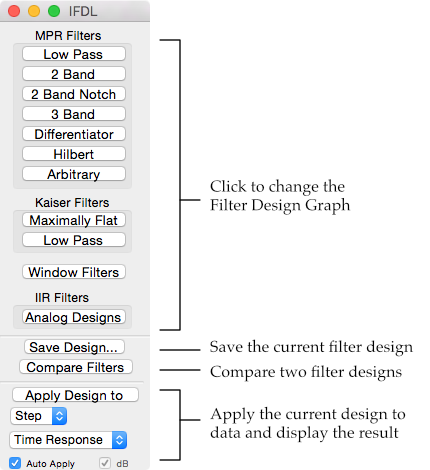
FIR Filter Designs
IFDL 4 can design FIR filters using the following techniques:
- Kaiser’s Maximum Flatness design.
- Kaiser’s window method.
- McClellan-Parks-Rabiner equiripple method:
- low pass
- high pass
- band pass
- band reject
- multi-band
- arbitrary response
- differentiators
- Hilbert transformers
- Window method using these standard windows:
- Hanning
- Kaiser[ß=1]
- Parzen
- Rectangular
- Welch
For example, the MPR 2 Band Design graph implements either a low pass or high pass filter using the McClellan-Parks-Rabiner ("MPR") equiripple technique:
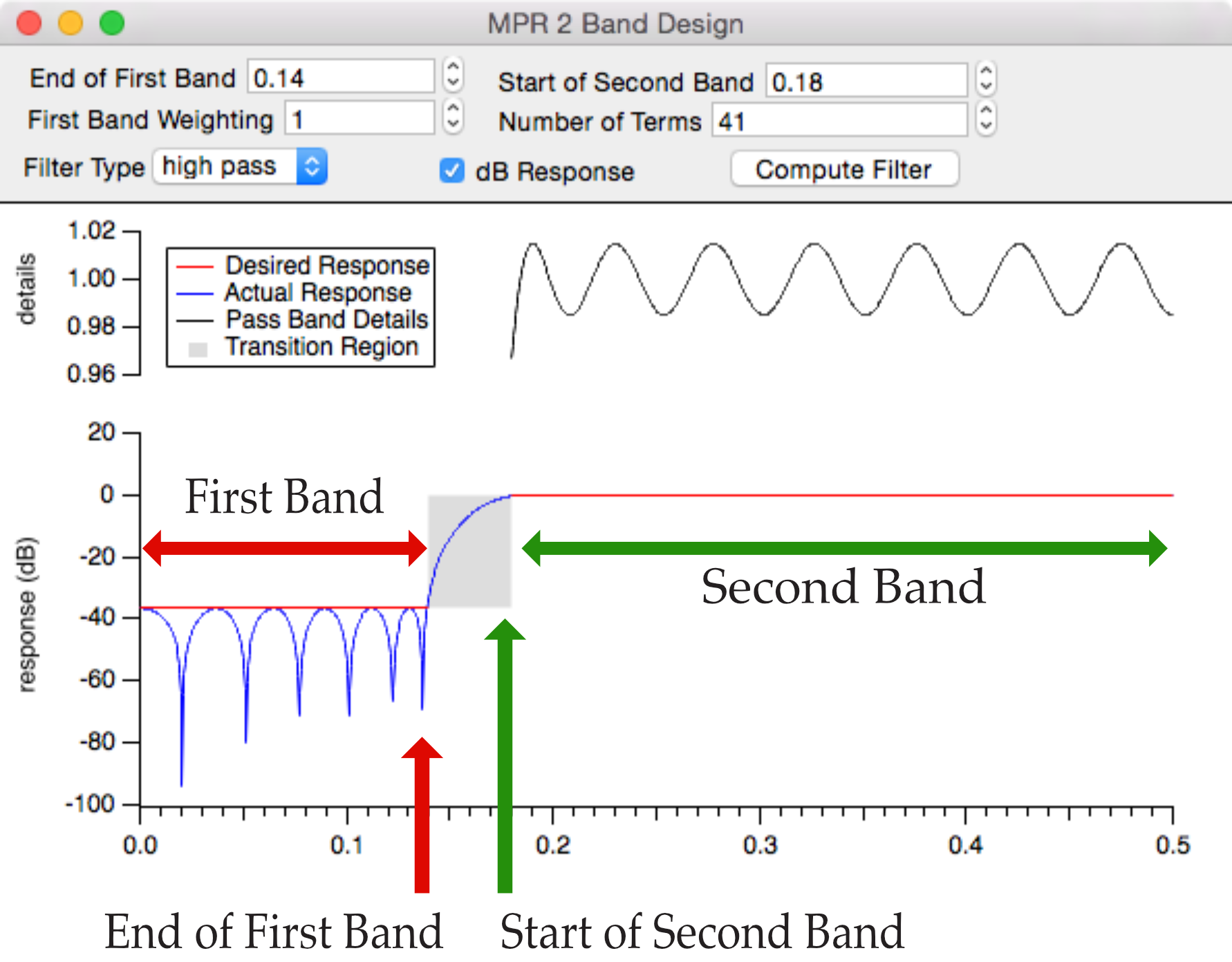
IIR Filter Designs
IFDL 4 can design IIR filters using a bilinear transform of these classical analog filter designs:
- Bessel
- Butterworth
- Chebyshev
- Notch-only
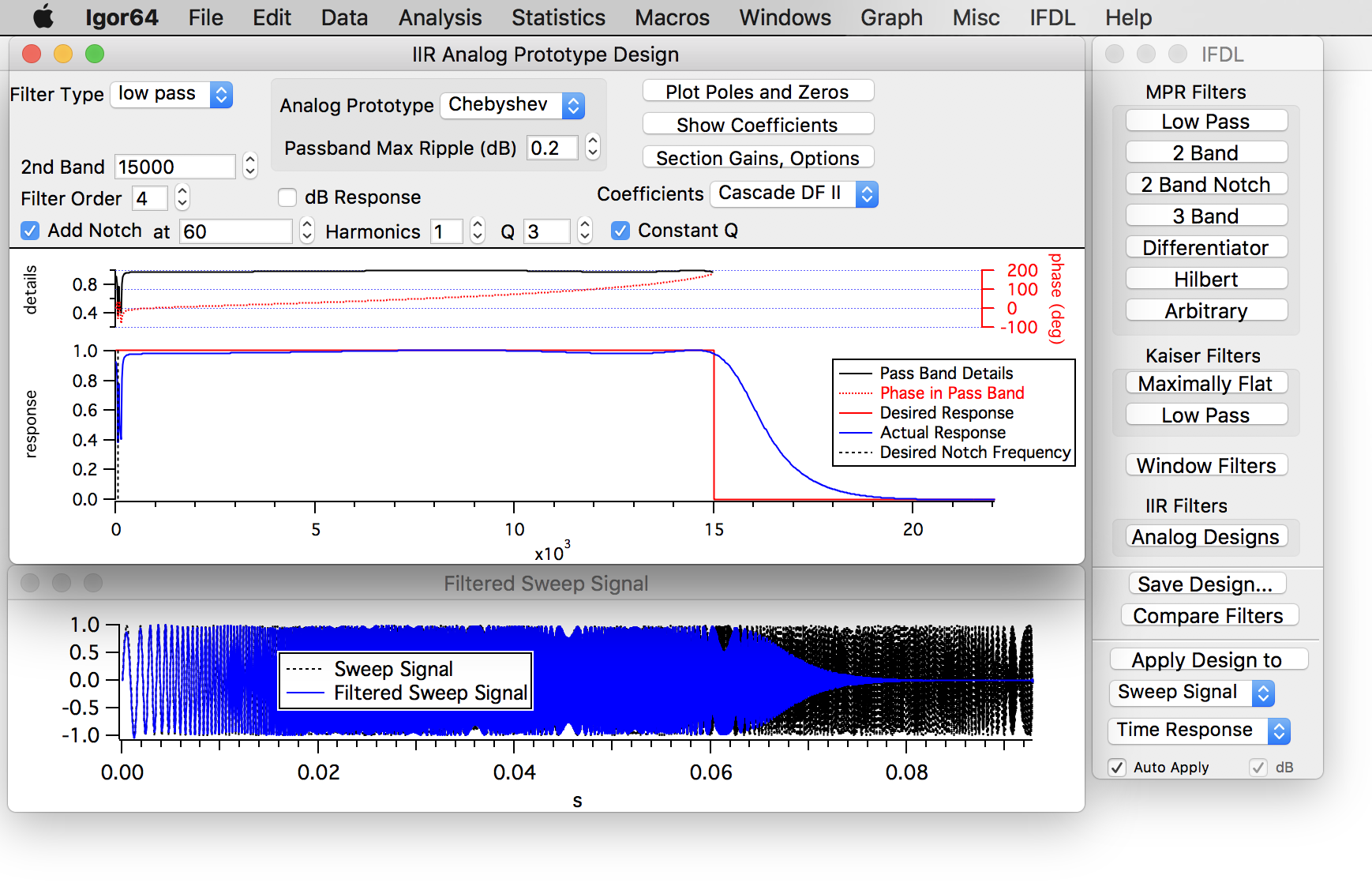
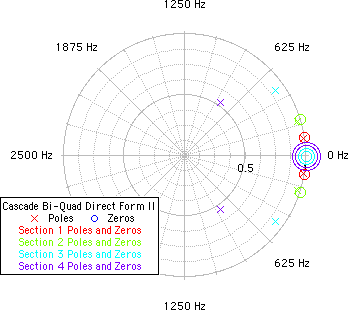
IIR filters can be implemented using a Direct Form I or Cascaded Bi-Quad Direct Form II filter:
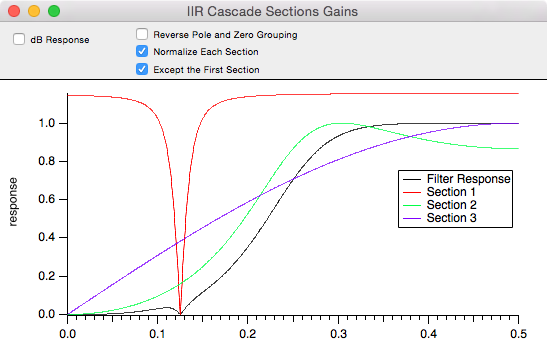
Instant Evaluation
IFDL automatically applies the current filter design to ideal or real data you select, whenever you request it or whenever you change a filter design parameter for instant feedback on how the filter will affect the data.
Comparing Filters
IFDL graphically compares two FIR filter’s frequency, impulse, and step responses:
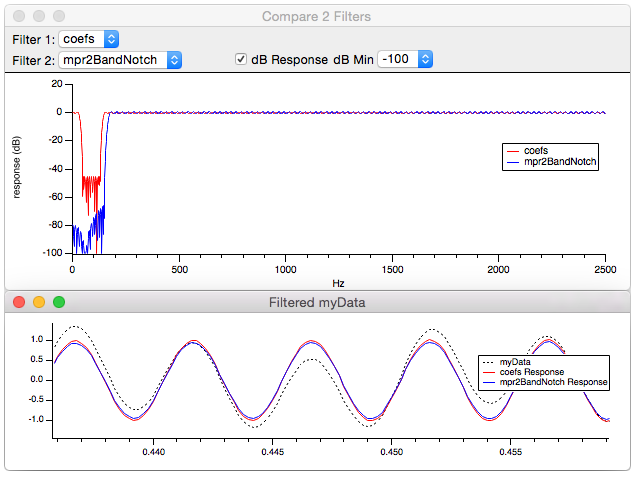
Applying Filters
You can apply the designed filters in other experiments by importing the saved filter coefficients and combining them with your data.
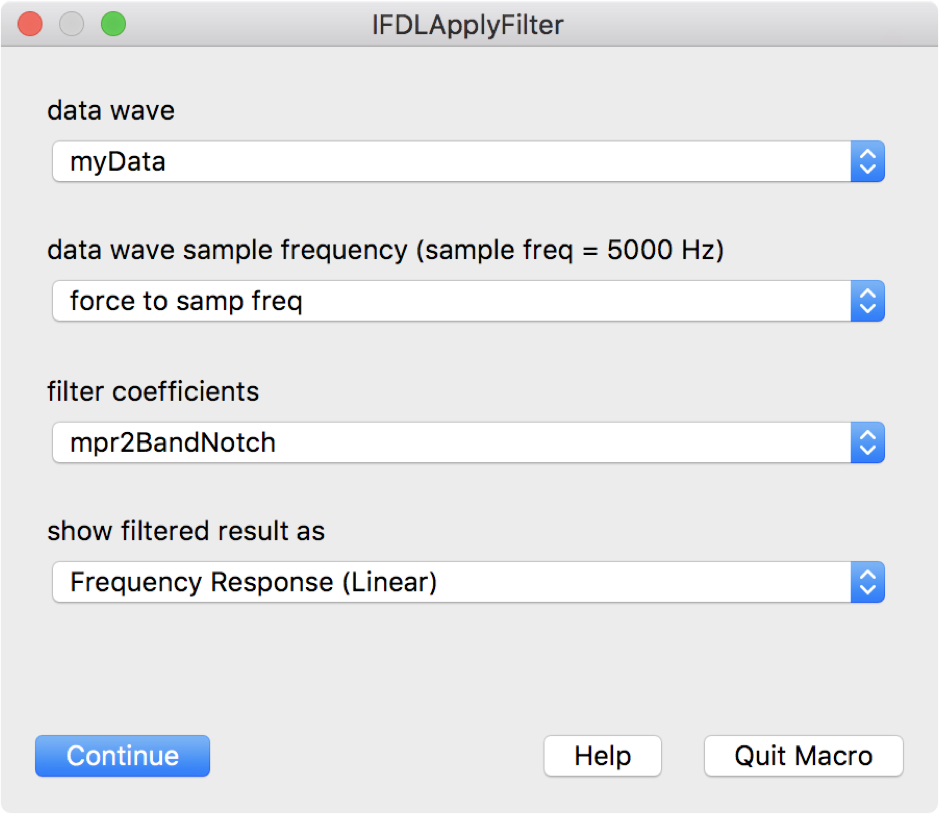

Forum

Support

Gallery
Igor Pro 9
Learn More
Igor XOP Toolkit
Learn More
Igor NIDAQ Tools MX
Learn More